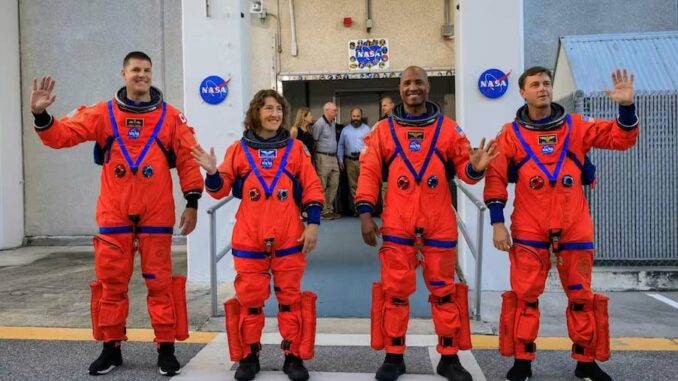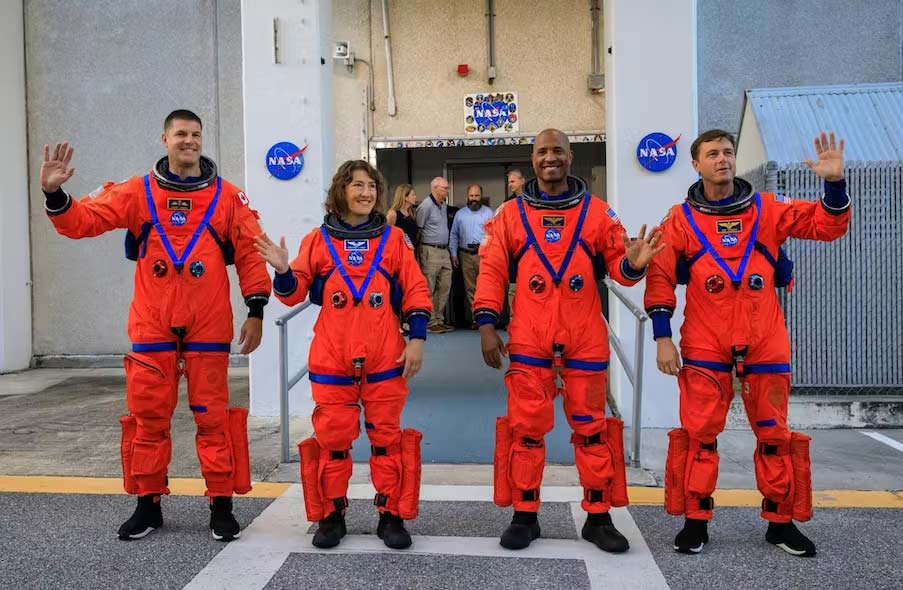
NASA is delaying the Artemis II and III missions, aimed at returning American astronauts to the Moon, until 2025 and 2026 for safety reasons.
Artemis II and III: Delays and stakes for return to the Moon
NASA has announced the postponement of the Artemis II and III missions, originally scheduled for this year and next, to September 2025 and September 2026 respectively. These missions represent a crucial step in the Artemis program, which aims to return American astronauts to the Moon for the first time in half a century. Artemis II aims to place NASA astronauts in lunar orbit, while Artemis III aims to land them on the Moon, more precisely at the lunar south pole – a first in the history of space exploration.
The main reason for this postponement is crew safety. NASA says the changes to the Artemis II schedule are motivated by the need to ensure the safety of the crew aboard the Orion spacecraft. The mission will test the critical environmental control and life support systems needed to sustain the astronauts. Problems encountered during component qualification testing, including a battery issue and challenges with a circuit component responsible for air ventilation and temperature control, require additional time to resolve.
In addition, the agency is investigating the unexpected loss of pieces of the spacecraft’s thermal protection layer during Artemis I, with findings expected this spring. Extensive heat shield sampling, testing and analysis of sensor and image data are part of this methodical approach to understanding the problem.

Implications of Artemis delays for lunar exploration and beyond
The postponement of the Artemis II and III missions has several important consequences for NASA and for space exploration in general. Firstly, it means a delay in NASA’s ambitious timetable for establishing a lasting human presence on the Moon and, eventually, for missions to Mars. These delays may have an impact on international and commercial partnerships, as several countries and companies are involved in the Artemis program, including the development of the Lunar Gateway, a space station orbiting the Moon.
From a technical point of view, the delays offer NASA an additional opportunity to resolve technical issues and ensure that systems are fully operational and secure. This includes optimizing the Orion spacecraft, perfecting the heat shield and ensuring that all components function as intended in the extreme environment of space.
These delays may also influence public perception and political support for the manned space program. While interest and enthusiasm for returning to the Moon is high, prolonged delays could affect the commitment of the public and political decision-makers. However, NASA’s transparency about the challenges it faces, and its commitment to ensuring crew safety, can also boost confidence in its ability to conduct successful and safe space missions.
On the scientific front, delays could affect the planning of experiments and research planned for the Moon. The Artemis missions aim to study the lunar south pole, a region that could contain frozen water and offer valuable information on the origins and evolution of the solar system. Delays in these missions could delay the collection of this important scientific data.
In addition, the postponement of Artemis will affect lunar infrastructure development projects, such as lunar habitats, life support systems and lunar surface technologies. These infrastructures are essential for achieving a lasting human presence on the Moon, and will serve as a springboard for future missions to Mars.
The postponement of NASA’s Artemis II and III missions marks a moment of reflection and adjustment in humanity’s journey back to the Moon. While this represents a challenge, it also offers the agency the opportunity to perfect its technologies and guarantee the safety and success of future missions.
War Wings Daily is an independant magazine.